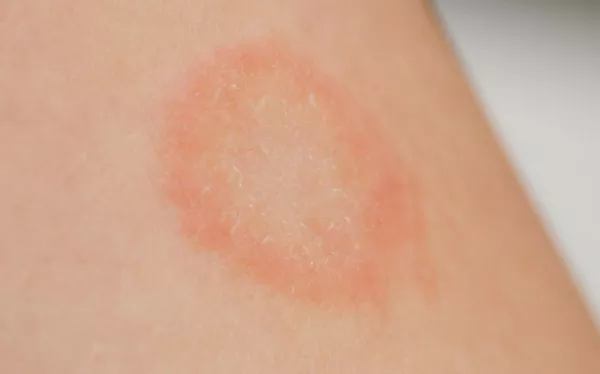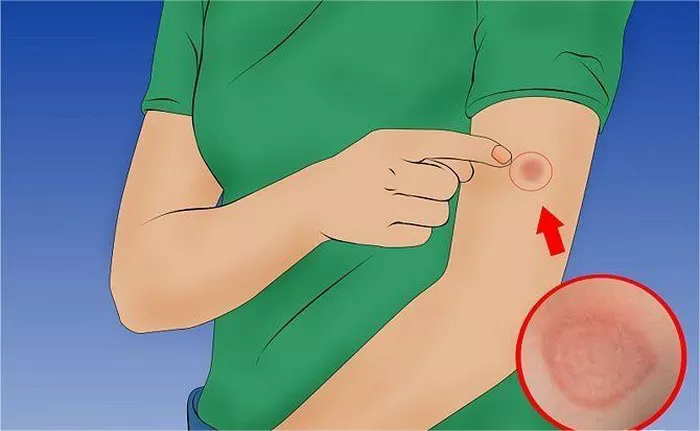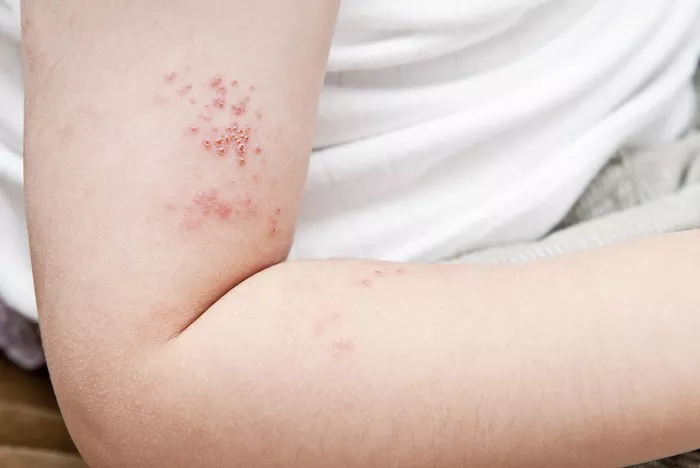Ringworm, also known as tinea, is a fungal infection that affects the skin, hair, and nails. Despite its name, it is not caused by a worm but by a group of fungi known as dermatophytes. These fungi thrive on keratin, a protein found in the outer layers of the skin, hair, and nails. Ringworm can affect anyone, regardless of age, but it is most common in children. It is highly contagious, spreading easily through direct contact or by touching surfaces contaminated with the fungus. This article will take an in-depth look at where ringworm grows, why it grows there, and what you can do to prevent and treat it.
Understanding Ringworm and Its Causes
Ringworm is caused by dermatophytes, a type of fungus that survives by feeding on the keratin in the skin. These fungi can be found in soil, on animals, and in human-to-human contact. The term “ringworm” comes from the round, ring-like appearance of the rash that often appears on the skin. It can be misleading because the condition is not related to worms at all.
Ringworm can affect different parts of the body, including the skin, scalp, feet, nails, and groin. The specific location where the fungus grows often depends on the environment and the type of dermatophyte involved. Some fungi prefer warm, moist areas of the body, while others thrive in more exposed, dry areas.
Common Areas Where Ringworm Grows
Scalp (Tinea Capitis)
The scalp is a common site for ringworm, particularly in children. Tinea capitis, the medical term for scalp ringworm, often begins as small, scaly patches that may become red, inflamed, or itchy. The infection can spread to the hair shafts, causing hair loss in the affected areas. Scalp ringworm is contagious and can be spread through sharing combs, hats, or towels.
Ringworm of the scalp often grows in areas where the hair follicles are more exposed, such as the crown, the nape of the neck, or behind the ears. The scalp is warm and moist, making it an ideal environment for fungi to thrive. People who sweat heavily, those who live in hot, humid climates, or those with poor hygiene are more likely to develop scalp ringworm.
Feet (Tinea Pedis)
Tinea pedis, commonly known as athlete’s foot, is another form of ringworm that grows on the feet. It is one of the most common types of fungal infections, particularly among athletes or individuals who wear tight, non-breathable shoes. The fungus thrives in warm, damp, and dark environments, making sweaty feet an ideal breeding ground.
The spaces between the toes are especially vulnerable to ringworm because they are often moist and not exposed to air. The infection can spread to the soles of the feet and even to the toenails. Athlete’s foot is highly contagious and can spread through shared locker rooms, showers, and swimming pools. Walking barefoot in such public areas increases the risk of developing tinea pedis.
Groin Area (Tinea Cruris)
Ringworm in the groin area is known as tinea cruris or jock itch. This condition is most common in men and athletes who wear tight-fitting clothing or athletic gear that traps moisture. The fungus grows in the warm, moist environment of the groin, where sweat can accumulate, especially in skin folds around the inner thighs, genitals, and buttocks.
Tinea cruris is characterized by red, itchy rashes with well-defined edges that may form a ring-like shape. The infection is commonly spread through direct skin-to-skin contact or by sharing contaminated towels, clothing, or sporting equipment.
Body (Tinea Corporis)
Ringworm on the body, known as tinea corporis, can appear anywhere on the skin, though it typically affects the arms, legs, and torso. The infection starts as small, red patches that gradually expand and form rings with raised edges. These patches may be itchy and are often surrounded by healthy-looking skin in the center. It can be spread through direct contact with an infected person or contaminated surfaces, such as bedding, clothing, or gym equipment.
Tinea corporis thrives in areas where the skin is exposed to moisture, such as in sweat or wet clothing. Wearing tight clothing, particularly in hot weather, can create a warm, moist environment that encourages the growth of fungi.
Nails (Tinea Unguium or Onychomycosis)
Fungal infections of the nails, also known as tinea unguium or onychomycosis, are another type of ringworm. This infection affects the toenails and fingernails, causing them to become thickened, discolored, brittle, and sometimes painful. Like other forms of ringworm, nail fungal infections are caused by dermatophytes that thrive on keratin.
Nail infections are more common in the toenails than fingernails, especially in people who wear tight shoes or who have conditions that cause poor circulation, such as diabetes. Fungi thrive in warm, damp environments, so people who often have wet or sweaty feet are more prone to developing fungal nail infections.
Why Does Ringworm Grow in These Areas?
The locations where ringworm grows are influenced by several factors, including temperature, moisture, and skin conditions. The fungi responsible for ringworm are called dermatophytes, and they thrive in environments where there is a sufficient supply of keratin (a protein found in skin, hair, and nails) and conditions that favor their growth.
Moisture
The most important factor that promotes the growth of ringworm is moisture. Fungi thrive in warm, damp environments, which is why ringworm is most commonly found in areas that sweat more, like the feet, groin, and scalp. When skin is frequently moist, especially in areas with skin folds or tight clothing, it creates an ideal breeding ground for fungi.
Heat
Fungi also prefer warm environments, and this is why ringworm tends to grow in areas where the body temperature is slightly higher than other parts of the body. The scalp, groin, and feet are naturally warmer, especially during physical activity or hot weather. These areas trap heat and sweat, allowing fungi to grow and spread more easily.
Friction and Skin-to-Skin Contact
Certain areas of the body experience more friction, which can cause skin damage and make it easier for fungi to infect the skin. The groin, for example, is subject to friction from tight clothing or athletic gear, while the feet are often confined to shoes that trap moisture. Skin-to-skin contact is another common way ringworm spreads. Activities like wrestling, sharing towels, or hugging can transfer the fungus from one person to another.
How to Prevent and Treat Ringworm
Preventing and treating ringworm involves reducing exposure to the fungus and promoting good hygiene practices. Here are some steps you can take:
Keep skin dry and clean: Dry skin is less likely to attract fungi. Make sure to dry areas between your toes, groin, and other skin folds thoroughly after bathing.
Wear breathable clothing: Avoid tight-fitting clothes and shoes, which can trap moisture and heat. Opt for loose, breathable fabrics made of cotton or moisture-wicking materials.
Practice good hygiene: Wash your hands regularly, especially after touching potentially contaminated surfaces or after physical activities.
Avoid sharing personal items: Do not share towels, combs, hats, or clothing, as ringworm can be spread easily through these items.
Treat ringworm promptly: If you notice any signs of ringworm, such as a red, scaly rash or itching, seek treatment immediately. Over-the-counter antifungal creams, powders, or shampoos can often treat mild infections. For more severe cases, a doctor may prescribe oral antifungal medications.
Conclusion
Ringworm is a common fungal infection that grows in various areas of the body, particularly where the skin is warm, moist, and exposed to friction. Common sites include the scalp, feet, groin, body, and nails. By understanding where and why ringworm grows, you can take steps to prevent it and seek treatment if necessary. Maintaining good hygiene, wearing breathable clothing, and avoiding direct contact with infected individuals or surfaces are key strategies to prevent the spread of ringworm. If you develop symptoms of ringworm, early treatment with antifungal medication can help resolve the infection and prevent it from spreading to others.
Related topics:


























